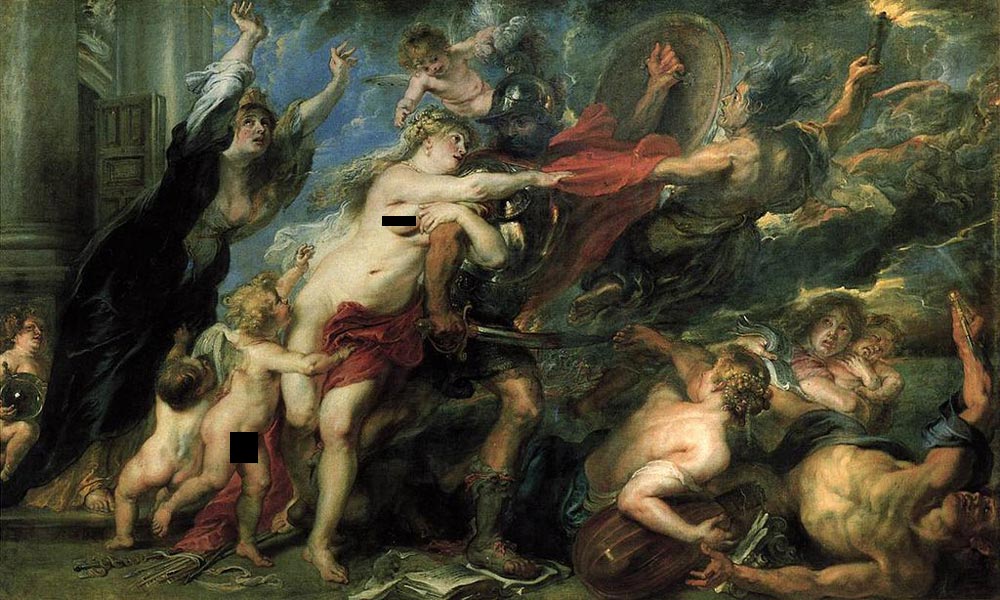| Consequences of War | |
|---|---|
 |
|
| Artist | Peter Paul Rubens |
| Year | 1638–39 |
| Medium | Oil on canvas |
| Location | Palazzo Pitti, Florence |
| Dimensions | 81 in × 136 in |
| 206 cm × 345 cm | |
| Famous Paintings by Peter P. Rubens | |
| Samson and Delilah | |
| The Descent from the Cross | |
| Prometheus Bound | |
| The Raising of the Cross | |
| Adoration of the Magi | |
| Consequences of War | |
| Complete Works |
Consequences of War is a magnificent oil on canvas which is a mesmerizing feast for the eyes, yet invokes a powerful sense of pain, violence, loss and tragedy. Rendered by the great Belgian-German painter Peter Paul Rubens between 1638 and 1639 in a style that art historians call “Flemish Borque.”
About War
The painting is a commentary on the one of the most wretched periods of European history, the 30 Years War, which was waged from 1618 through 1648. It resulted in widespread destruction across just about every major European nation. It was a time of death, starvation, sorrow, fright and agony for millions of people.
Mars and Venus
The Roman god of war, Mars, takes center stage in the Consequences of War. He stands astride with sword in hand, held low, but which is pointing toward a chaotic scene of battle. His head is turned sharply backward as he gazes upon a gorgeous nude depiction of Venus, the goddess of love. Her head is resting on the back shoulder of Mars. Her face seems to plead with him to end the madness he has brought among mankind.
Behind and above Venus are cherubic children. The soft white flesh of Venus and her cherubic attendants stands in stark contrast to the dark, gritty appearance of the brutally masculine Mars. Though Mars has an adoring look for his fellow deity, his body language suggests he still relishes a plunge into the roiling violence on the right side of the painting.
Color Scheme
The color scheme is dominated by muted grays, browns and dirty greens, but is contrasted by the flesh-white bodies of Venus and the children. The blood-red robe of Mars also provides vivid relief in the center of the work.
Impact
It’s to find within Consequences of War any kind of neutrality, or the mere feeling one is looking at just a marvelous achievement of art. It projects the violence and pain of the times.
This piece was commissioned by Ferdinando II de’ Medici, the Grand Duke of Tuscany.